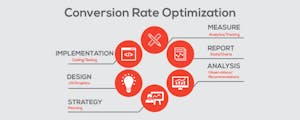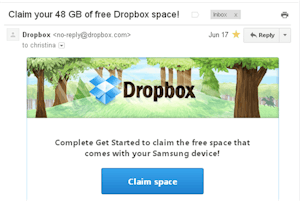Despite the many ways Google has changed the search game over the last five years, one truth remains: content is the vehicle that drives your consumer interactions, engagements, experiences and, ultimately, conversions. However, only 41% of marketers think their organization is clear on what an effective or successful content marketing program looks like, according to the Content Marketing Institute (CMI).
Marketers aren’t just lacking confidence in their efforts; these are real and measurable deficits. In fact, only 20% of B2C and 50% of B2B content earns any engagement at all. That’s a lot of wasted effort and resources invested in content that ends up just floating around the web, winning zero business benefit for its creators.
In this post, we’re going to take a look at content through the SMART lens. SMART is a goal-setting framework in which S stands for Specific, M for measurable, A for achievable, R for relevant and T for timely. Below explains how to apply search engine optimization (SEO) to your content within a SMART framework, giving you 14 concrete ways to make your marketing more effective and to win you more business.
S — Specific content wins every time.
Content is not about what your marketing team wants to say. It is about providing insight and information that your audience actually wants to hear.
SMART content is designed for a specific audience, based on your understanding of their needs, preferences and intent.
1. Get to know your audiences

2. Discover opportunities through topical research
How well do you understand the competitive environment in the verticals for which you’re creating content? Today, you’re competing for eyes and clicks. Your competitors may be other companies, but you could be competing for space in the SERPs against media brands, bloggers, influencers and more. Without that bigger-picture, bird’s-eye view of relevant search and social spaces, you’re flying blind.
Evaluating the content gaps not covered by your competition provides you with opportunities to create engaging content that speaks to people in the key moments that matter.
3. Choose content formats wisely
M — Measurable content delivers on the metrics that matter
Content marketers are getting better at proving the business value of their activities. Just two years ago, only 21% of B2B marketing respondents to CMI’s annual content marketing survey said they were successful at tracking ROI. Now, in 2017:
• 72% are measuring their content marketing ROI.
• 51% are using a measurement plan to provide both insight and progress toward the business goals.
• 79% are using analytics tools.
4. Choose metrics that matter and align with your business goals.
Which KPIs (Key Performance Indicators) tell the true story of your content’s success? Ideally, you’re going to measure your content’s performance through the entire funnel, right from lead generation and audience-building to nurturing, conversion, sales and right on through post-sales to retention and evangelism. Site traffic, lead quality, social shares, time on site and conversion rates are among the top metrics used by B2B marketers to determine content success. Priorities are similar for B2C marketers.
5. Make search engine optimization a core component of content creation.

6. Accelerate with automation.
Machine learning is growing in importance in search, especially where data sets are large and dynamic. Identifying patterns in data in real time makes machine learning a great asset to understand changes in your customer base, competitor landscape or the overall market. Ideally, your content automation system will include reporting to tell you not only how each piece is performing but also make recommendations to help you focus on your most valuable opportunities.
Automation allows you to manage routine tasks with less effort so that you can focus on high-impact activities and accomplish business goals at scale.
A — Actionable content is always on & ready for activation
By actionable content, I mean that which is ready to answers users’ questions but also is valuable way beyond the initial period of promotion after publishing.
7. Empower your content creators with technical SEO support.

8. Optimize for activation across multiple channels.
Search engine marketing is the second-most commonly used paid content promotion tactic, next only to social advertising. Push your content to social channels like Twitter and Facebook, but don’t forget other channels like LinkedIn, YouTube, Pinterest, Instagram and Google+. Ideally, you’re going to have some understanding of your audience on each platform and which channels will be most receptive to each new piece. Make sure you’re optimizing your social posts for the platform on which you’re posting — cutting and pasting the same post across all channels doesn’t cut it.
R — Resonate with content promotion in relevant channels
Even if you build it, they will not come until attracted. The competition for eyes and minds is fierce; increase the efficacy of your organic efforts and promotional spend by targeting the right people in the right places at the right time.
9. Amplify in social channels for early traction.

10. Syndicate and use paid promotion to reach targeted audiences outside your existing network.
Syndication takes content you’ve already published on your site and republishes it elsewhere, exposing you to another publication’s audience. You might be able to find organic syndication opportunities, and there are plenty of paid syndication services like Outbrain, Taboola or Zemanta. If you’re looking at large-scale syndication, read Danny Sullivan’s caution on using links in syndicated pieces first to stay on the right side of Google.
11. Don’t forget email!

T — Tangible business results are derived from SMART content
KPIs like social interactions and site visits give you a great idea of how well your content performs in search and social, but you need tangible business results to prove value.
12. Make content profitable with CTAs that drive performance.
What action would you like readers to take? Which of your site’s conversion pages is currently converting best and generating the highest-quality leads? These insights will help guide your CTA selection, but remember, your CTAs should also match the consumer intent you’re targeting with each piece. Don’t forget to include embedded performance tracking for both site traffic and conversions.
13. Incorporate elements that support multiple business functions.

14. Improve ROI with ongoing content management and optimization.
How much content does your organization have sitting on-site and around the web? Each piece is an opportunity for ongoing traffic and lead generation, but only if it’s kept in line with constantly changing SEO standards. Updating your entire catalogue of content every time Google releases an update would be a task so astronomical in scope that it’s not even worth considering doing manually.
Bringing it all together
Intelligent marketers are beginning to move the needle on content performance by embracing SEO and content as one. While it is true that both disciplines have high degrees of specialization (for example, technical SEO or branded content), the most prolific and tangible results come from a combination of both.

Why Is Organic SEO Critical for Your Law Firm
Today, more and more...

SEO Services That Should Be Included When You Sign On with an SEO Company
In a world where half of the...

Optimizing Local Search Rankings
In 2016, when mobile web...

What is SEO? SEO Guide for 2021
By David Montalvo, VP, Web...

What You Need to Know About SEO & Web Design
Marketers and entrepreneurs...

5 Top SEO Tips for 2020
Optimizing your website can...

CTA Creation Strategy to Increase Clicks Without Dropping Traffic
Let’s be clear: every...

Keyword Research (Google Keyword Planner)
Transcript Below: SEO...

Major Marketing Trends for 2020 and Beyond
With so many changes...

